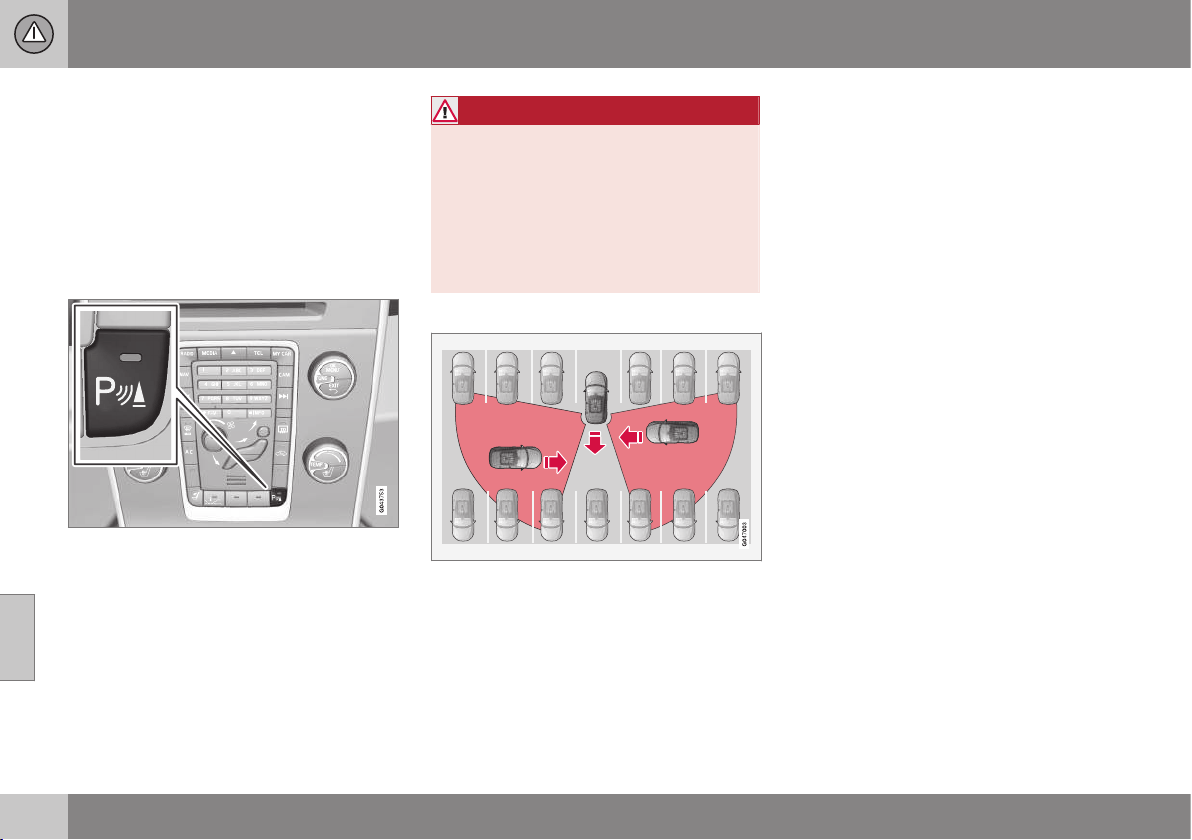Loading ...
Loading ...
Loading ...

07 Driver support
07
266
* Option/accessory, for more information, see Introduction.
CTA*
The BLIS function CTA (Cross Traffic Alert) is
a driver aid intended to warn about crossing
traffic when the car is reversing. CTA is a sup-
plement to BLIS (p. 263).
Activate/deactivate CTA
CTA is activated when the engine is started.
This is confirmed by the indicator lamps for
BLIS in the door panels flashing once.
On/Off for parking assistance and CTA sensors.
The CTA function can be deactivated/acti-
vated separately with the Parking assistance
(p. 251) On/Off button. The BLIS lamps flash
once on reactivation.
However, the BLIS function remains activated
after the CTA has been deactivated.
WARNING
CTA is a supplementary aid and does not
work in all situations.
CTA is no substitute for a safe driving style
and the use of rearview and door mirrors.
CTA can never replace the driver's respon-
sibility and attention - it is always the driv-
er's responsibility to reverse in a safe man-
ner.
When CTA operates
Principle for CTA.
CTA supplements the BLIS function by being
able to see crossing traffic from the side dur-
ing reversing, such as when reversing out of a
parking space.
CTA is primarily designed to detect vehicles.
In favourable conditions, it may also be able
to detect smaller objects, such as cyclists
and pedestrians.
CTA is only active during reversing and is
activated automatically when the gearbox's
reverse position is selected.
•
If CTA detects something approaching
from the side, an acoustic warning signal
sounds. The signal comes from either the
left or the right-hand speaker, depending
on the direction from which the object is
approaching.
•
CTA also warns by illuminating the BLIS
lamps.
•
An additional warning is provided in the
form of an illuminated icon in the display
screen's PAS graphics (p. 251).
Limitations
CTA does not perform optimally in all situa-
tions, but has a certain limitation - for exam-
ple, the CTA sensors cannot "see" through
other parked vehicles or obstructing objects.
Here are some examples of when CTA's "field
of vision" may be limited from the beginning
and approaching vehicles cannot therefore be
detected until they are very close:
Loading ...
Loading ...
Loading ...